(Featured image: Circe and her Swine, Briton Rivière (1896). In Greek mythology, Circe was an enchantress who transformed humans who set foot on her island into animals. In H.G. Wells’ The Island of Doctor Moreau, the title character is a fanatic hellbent on achieving the exact opposite by vivisecting animals into humanoid form.)
“I discovered that I was one of those superior Cagots called a genius—a man born out of my time—a man thinking the thoughts of a wiser age, doing things and believing things that men now cannot understand… I knew I was an Anachronic Man; my age was still to come. … Thirty years of unremitting toil and deepest thought among the hidden things of matter and form and life, and then that, the Chronic Argo, the ship that sails through time, and now I go to join my generation, to journey through the ages till my time has come.”
In H.G. Wells’ “The Chronic Argonauts” (1888), his first literary venture into time travel, the character Moses Nebogipfel discovers that he is an “Anachronic Man,” endowed with genius far ahead of his time, and builds a time machine (the Chronic Argo) with which to search out an era more hospitable to his ideas. For many, Wells himself represents a very similar figure, an intellectual visionary whose writings both foretold the wondrous future of science and forewarned of grave consequences should society fail to adopt new ethics for the technological era.

H.G. Wells (1866-1946), via Wikimedia
Until very recently, I too envisioned H.G. Wells uncritically as a genius ahead of his time. His 1895 novel The Time Machine has been my favorite book ever since I first discovered it through Wishbone‘s TV adaptation as a child, and I have read and reread the story many times into adulthood. On the surface I loved it simply as a gripping adventure tale, but on a deeper level I found it offered many profound insights on human nature, justice, and the evolution of societies. These included what I perceived as a strong implicit message regarding human exploitation of animals.
In the future world of 802,701 CE, Wells’ unnamed Time Traveler discovers that humanity has diverged into two separate species: the peaceful, childlike Eloi, who frolic and play innocently amidst the fading ruins of civilization, and the bestial yet mechanistic Morlocks, nocturnal predators who dwell underground. The Eloi are strict vegetarians, while the Morlocks are carnivores, using industrial technology to farm and slaughter Eloi for food. Having run out of non-human animals to exploit and kill (“horses, cattle, sheep, dogs, had followed the Ichthyosaurus into extinction”), the Morlocks ultimately chose to adopt cannibalism rather than give up meat. In Wells’ nightmarish vision of the future, it is therefore humans’ attachment to eating animals that will ultimately prove our downfall.
H.G. Wells is often included in lists of famous historical vegetarians. The only citation usually given is a quote from his 1905 work A Modern Utopia, in which he lays out his vision of the perfect human society on an alternate version of Earth:
“In all the round world of Utopia there is no meat. There used to be. But now we cannot stand the thought of slaughter-houses. And, in a population that is all educated, and at about the same level of physical refinement, it is practically impossible to find anyone who will hew a dead ox or pig. We never settled the hygienic question of meat-eating at all. This other aspect decided us. I can still remember, as a boy, the rejoicings over the closing of the last slaughter-house.”
This quote, given by a fictional character in a utopian fantasy, does not necessarily demonstrate that Wells was vegetarian in real life; but it does indicate, along with The Time Machine‘s treatment of the subject, that he saw a meatless diet as the ethical ideal for humanity.
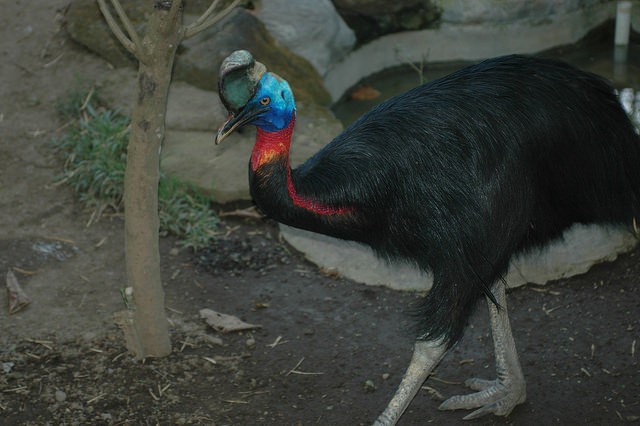
Cassowary, a close living relative of the extinct elephant bird (photo credit: Kim Bartlett – Animal People, Inc.)
Pro-animal themes appear elsewhere in Wells’ body of work. In The War of the Worlds (1898), his protagonist says of the invading Martians’ consumption of human blood that “the bare idea of this is no doubt horribly repulsive to us, but at the same time I think that we should remember how repulsive our carnivorous habits would seem to an intelligent rabbit.” In the 1894 short story “Aepyornis Island,” a shipwrecked sailor raises a prehistoric elephant bird, hatched from a long-dormant egg, as his only companion. The giant rattite, 14 feet tall as an adult, eventually turns aggressive following a skirmish over limited food, and the sailor is forced to kill the bird to protect himself. His regret is profound, however, and the overall impression is one of tragedy, illustrating what happens when wild animals are forced to live in close proximity to humans.
“Good Lord! you can’t imagine how I missed that bird. I sat by his corpse and sorrowed over him, and shivered as I looked round the desolate, silent reef. I thought of what a jolly little bird he had been when he was hatched, and of a thousand pleasant tricks he had played before he went wrong. I thought if I’d only wounded him I might have nursed him round into a better understanding. If I’d had any means of digging into the coral rock I’d have buried him. I felt exactly as if he was human.”
By far H.G. Wells’ clearest writing on the subject of human-animal relations comes in his 1896 horror novel The Island of Doctor Moreau. As in “Aepyornis Island,” the protagonist Edward Prendick is a man lost at sea, rescued by a schooner and carried, along with a large shipment of caged animals, to a remote island in the South Pacific. There he encounters Dr. Moreau, an infamous vivisector driven out of London following public outcry over his cruel research on dogs. Now free of any restrictions on his work, Moreau has taken vivisection to a new extreme, seeking to transform animals into the image of humans by surgically restructuring their living bodies and brains. The creatures molded under his scalpel are capable of human-like motion, thought, and even speech, and while often coarse and violent, are ultimately acknowledged by Prendick as being no more bestial than most human beings. Wells thereby erases any intrinsic moral distinction between humans and animals, or their suffering, and details the horrific magnitude of the latter with devastating clarity as Prendick overhears a puma being vivisected by Moreau:
“The emotional appeal of those yells grew upon me steadily, grew at last to such an exquisite expression of suffering that I could stand it in that confined room no longer. … It was as if all the pain in the world had found a voice. Yet had I known such pain was in the next room, and had it been dumb, I believe—I have thought since—I could have stood it well enough. It is when suffering finds a voice and sets our nerves quivering that this pity comes troubling us.”
Dr. Moreau is depicted as just about the most diabolical villain imaginable, fully aware of his victims’ ability to suffer (unlike Descartes, the real-life “father of modern science” and an early proponent of vivisection, Moreau does not argue that animals are insentient), but entirely unmoved by compassion. In fact, he delights in the pain he inflicts, describing it like some medieval religious zealot as a means of spiritual purification:
“Each time I dip a living creature into the bath of burning pain, I say, ‘This time I will burn out all the animal; this time I will make a rational creature of my own!’ After all, what is ten years? Men have been a hundred thousand in the making.”
Once published, The Island of Doctor Moreau helped to galvanize public opinion against vivisection in England, playing a role in the foundation of the British Union for the Abolition of Vivisection (now Cruelty Free International) in 1898. Reading the novel, it appears self-evident that H.G. Wells saw vivisection as monstrously wicked, and penned Doctor Moreau to illustrate the evils that result when science is pursued at the expense of ethics or compassion.
It was to my great shock, then, to learn that later in life H.G. Wells actually defended vivisection as a noble scientific venture! He even went so far as to visit physiologist Ivan Pavlov (1849-1936) in Russia, whom he publicly praised in almost worshipful language. Pavlov was in many ways a real-life Dr. Moreau. The reality of his experiments was a far cry from the cutesy popular image of puppies drooling at the sound of a kitchen bell; rather, they entailed cutting off the lower jaws of immobilized dogs and inserting tubes directly into their salivary glands. Few animals survived more than a few days of such treatment. Of one especially “productive” subject, Pavlov wrote, “Our passionate desire to extend experimental trials on such a rare animal was foiled by its death as a result of extended starvation and a series of wounds.”
Furthermore, Pavlov argued, like Moreau, not that animals were incapable of suffering but that their agony was not a matter of concern. He was an influential figure in a line of researchers who believed that subjective experiences, such as consciousness and suffering, could not be scientifically quantified and so were unworthy of any consideration by scientists. This was true not only for other species but for humans as well, whose behavior they also sought to explain in purely mechanical terms (and indeed, humans were sometimes vivisected too, as in U.S. insane asylums and German and Japanese concentration camps).
“For a consistent investigator there is in the higher animals only one thing to be considered – namely, the response of the animal to external impressions… Strictly speaking, natural science is under an obligation to determine only the precise connection which exists between the given natural phenomenon and the responsive faculty of the living organism with respect to the phenomenon – or, in other words, to ascertain completely how the given living object maintains itself in a constant relation with its environment.” (Ivan Pavlov, “The Scientific Investigation of the Psychical Faculties or Processes in Higher Animals,” Science 24 (1906))
Other scientists in this tradition include the American psychologist B.F. Skinner (1904-1990), who actually discovered Pavlov’s ideas through H.G. Wells’ own glowing review of one of Pavlov’s books, published in Times Magazine in 1927. Despite Pavlov’s similarity to Dr. Moreau, H.G. praised him in this article as a “star which lights the world, shining down a vista hitherto unexplored.”
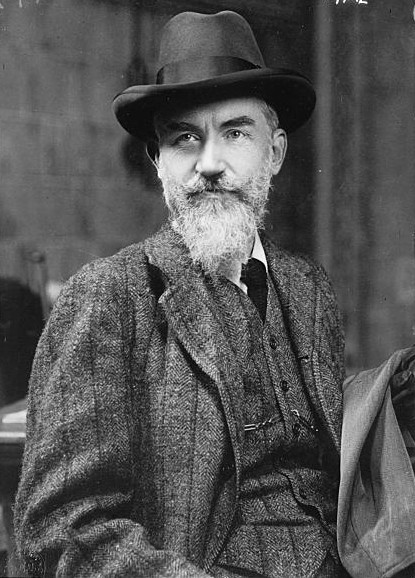
George Bernard Shaw (1856-1950), via Wikimedia
In the same piece, Wells responded to anti-vivisection activists like George Bernard Shaw (1856-1950). Shaw, a fellow author and social critic as well as a vegetarian, condemned vivisectors as “infinite scoundrels” with “no limit” in their cruelty except for their own “physical capacity for committing atrocities and… mental capacity for devising them.” Mocking Shaw’s concerns, Wells retorted, “What has Shaw added to our arsenal of ideas, to our store of knowledge? to the illumination of the world? … His ideas are a jackdaw’s hoard, picked up anywhere and piled together anyhow.” That same year, the two authors’ writings were adapted into a pamphlet, Shaw v. Wells on Vivisection, with Shaw attacking and Wells defending the practice.
(It may be relevant to note that despite their extremely heated conflict over vivisection in the public sphere, H.G. Wells and George Bernard Shaw were actually close friends in real life. Following Wells’ death in 1946, Shaw wrote of their ideological conflicts that H.G. “filled a couple of columns… with abuse of me in terms that would have justified me in punching his head; but when we met the next day our intercourse was as cordial as before; it never occurred to me that it could be otherwise.” It would be interesting to learn if Shaw ever wrote of Wells’ private views concerning animals.)
How, then, can we resolve the paradox of H.G. Wells’ views on animals; between the seemingly pro-vegetarian, anti-vivisection themes of his famous stories, and his apparent callousness toward animals harmed in the name of science later in life?
Did H.G. Wells start off morally opposed to vivisection because of the suffering it caused animals, as when he wrote The Island of Doctor Moreau at the age of 29, only to change his position later in life? Did he fail to heed his own novel’s warning and, seduced by the wonders of science, cast his ethical qualms aside? Or did he conclude that vivisection was ethically justified, deciding that the potential benefits to medicine or science in general outweighed the harm caused to animals? Of the latter possibility, it’s worth noting that even many animal activists today acknowledge a moral grey area when it comes to animal research with clear, direct benefits to some greater good (such as human health or veterinary medicine, conservation, or establishing animal sentience). In his book Practical Ethics, animal rights philosopher Peter Singer argues on utilitarian grounds that some experiments on animals may be justified if the results prove to benefit a much larger number of sentient beings; and Kim Rogers Bartlett of Animal People has proposed that activists might reach an accord with biomedical researchers if the latter agree to minimize animal use wherever possible, abide by high standards of animal welfare, and actively seek alternative models for their work. Nonetheless, there is still an enormous difference between tolerating some limited animal research as a “justifiable harm” and enthusiastically defending the practice as a whole, as Wells did in later years.
Did Wells in fact never intend The Island of Doctor Moreau to criticize vivisection at all, as a few commentators have argued? Did he himself view Moreau as a tragic hero rather than a villain, and write his lurid accounts of the doctor’s cruelty with admiration rather than revulsion? If so, I can regard him as none other than a psychopathic monster. Unfortunately, the facts of his reverence for Ivan Pavlov in real life, plus his criticism of the 1932 film adaptation of his book (partly due to its portrayal of Moreau as a sadist, even though most readers would undoubtedly get the same impression of the character from Wells’ own writing) prevent altogether ruling out this ugly possibility.
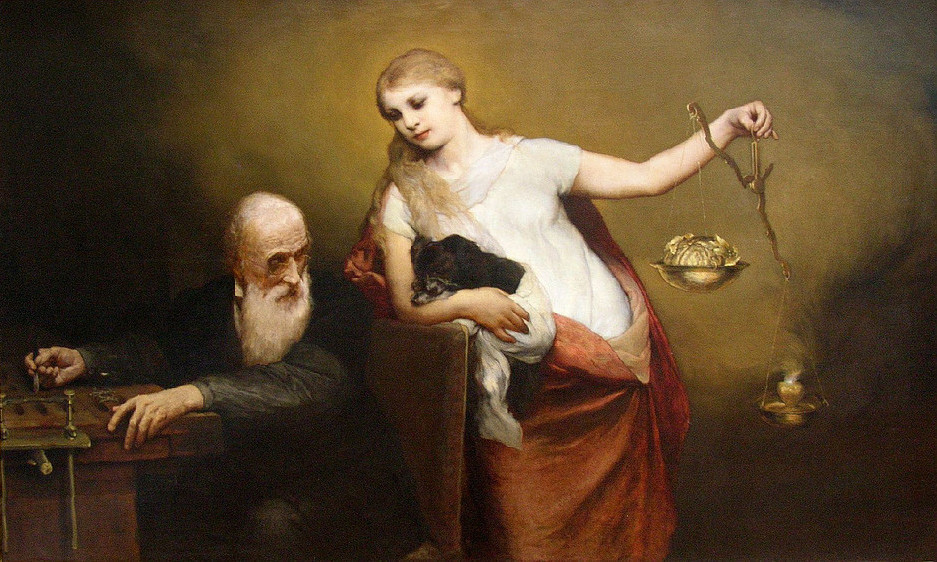
“Der Vivisektor” by Gabriel von Max (1883). Lady Justice cradles a small dog while weighing the brain against the heart on her scale.
More likely, Wells’ views on vivisection were always more complex than the hypotheses above would suggest. Could it be that he supported some experiments, for some purposes, while rejecting others, and wrote Doctor Moreau not as a blanket condemnation of all vivisection, but to establish some dividing line between acceptable and unacceptable practices? If so, he shared common concerns with many in the scientific community, including Charles Darwin (1809-1882), who defended vivisection but, having himself demonstrated the common descent and shared capacities of humans and other species (including the ability to suffer), insisted that subjects be anesthetized, and rationalized that the results would ultimately benefit all species of animal. H.G. Wells himself studied biology in college, during a time of heightened public pressure against vivisection following passage of the British Cruelty to Animals Act in 1876, and it’s easy to imagine he may have felt very conflicted between the free practice of science in pursuit of knowledge, the ethical concerns of animal activists, and his own innate sympathy for animals. On a personal level, perhaps his demonic characterization of Dr. Moreau was a way of expurgating his own troubled conscience, quite separate from the positions he held on intellectual grounds?
No matter which explanation is correct, I still cannot quite reconcile Wells’ defense of vivisection with the message I gleaned from The Time Machine. The Time Traveler eventually learns that the cannibalistic Morlocks were not always the aggressors against the Eloi. At one time, they were the latter’s slaves. Long before the 8,028th century, the ancestral Eloi built a Utopia for themselves upon the backs of Morlock laborers, transforming the Earth into a fruitful garden free of predators, disease, or natural disasters. Having achieved their own vision of perfection, the Eloi ceased to evolve, slowly degenerating in strength and intelligence until eventually, the Morlocks were able to overthrow their former tyrants and exploit them for food. So we learn that no matter how lofty or noble its goals, a society based on the exploitation of others can only end in the degradation of all.
How could Wells the visionary not see that by defending exploitation of animals as a means of progress, he was creating the very future he foretold?
__
UPDATE 2/7/2016: Since writing this article, I discovered a print copy of H.G. Wells’ 1928 essay “Popular Feeling and the Advancement of Science. Anti-Vivisection,” in which he details his own personal views on animal research, in the University of Washington library. I have transcribed it for you to read online here.

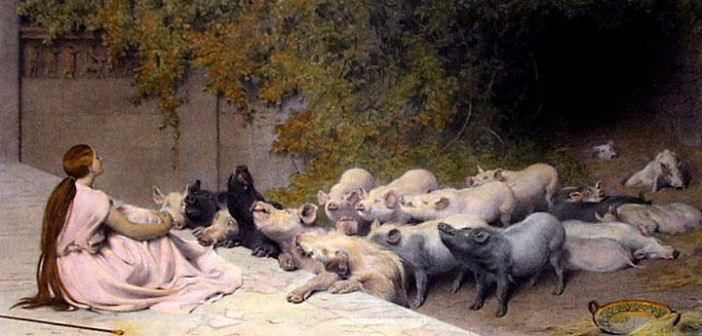
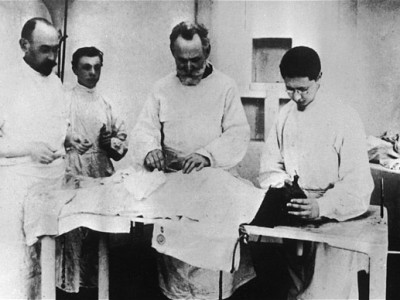




1 Comment
Fantastic article which I had to share 🙂 Thank you